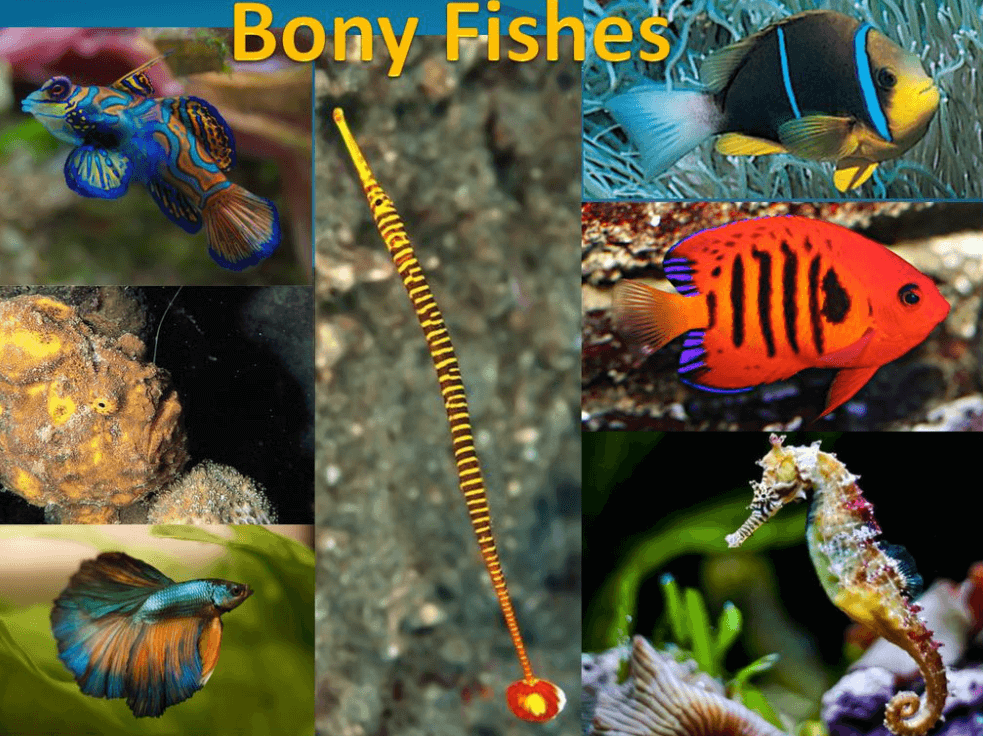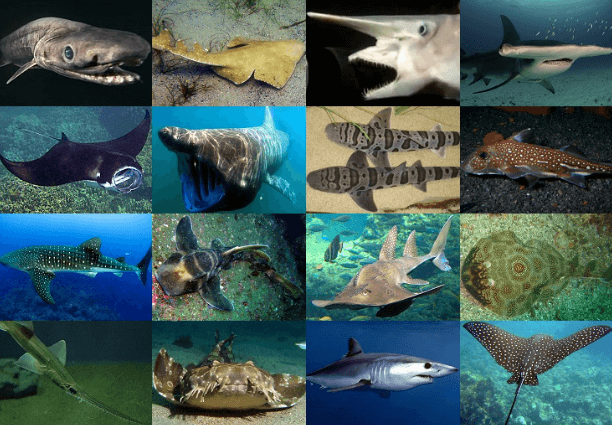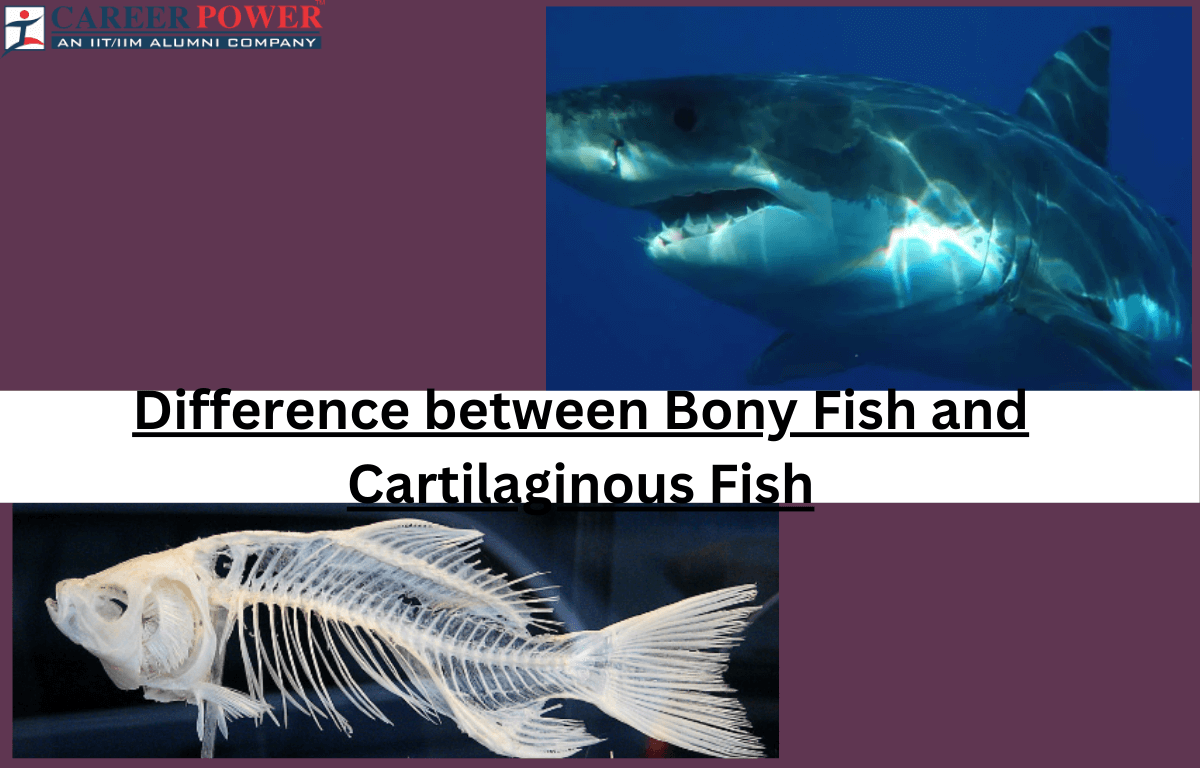Fishes are aquatic animals with gills for breathing and fins for swimming. They come in various types, broadly categorized as bony fishes, like salmon and cod, have skeletons made of bone, while cartilaginous fishes, such as sharks and rays, have skeletons made of cartilage. Other types include jawless fishes, like lampreys, and lobe-finned fish, like coelacanths. Fishes inhabit diverse environments, from freshwater lakes to oceans, and display incredible diversity in size, shape, and behavior. Here we have discussed Bony and Cartilaginous fishes.
Bony Fish and Cartilaginous Fish
Bony fish have skeletons primarily made of bone tissue, while cartilaginous fish, like sharks and rays, have skeletons made of cartilage. Bony fish usually have scales, opercula covering their gills, and a swim bladder for buoyancy. Cartilaginous fish lack these characteristics and rely on their large livers for buoyancy.
Define Bony Fish
Bony Fish are a diverse group of aquatic vertebrates characterized by their skeleton, which is primarily composed of bone rather than cartilage. This distinguishes them from cartilaginous fish like sharks and rays. Bony fish encompasses a vast array of species, from tiny minnows to massive tuna. They breathe through gills, extracting oxygen from water, and most have scales covering their bodies for protection. These fish exhibit a wide range of adaptations, including various fin shapes for maneuverability and stability, as well as a swim bladder that helps control buoyancy.

Bony fish reproduce in diverse ways, with many species laying eggs that hatch externally, while others give birth to live young. They play crucial roles in ecosystems as both predators and prey, contributing to the balance of aquatic environments. Additionally, bony fish are important for human consumption, serving as a staple in diets worldwide.
Define Cartilaginous Fish
Cartilaginous Fishes are a group of aquatic animals characterized by their skeletons made of cartilage rather than bones. This includes sharks, rays, and skates. Unlike bony fish with skeletons made of hard bones, cartilaginous fish have a more flexible and lighter structure, providing them with agility in the water. One notable feature is their tooth-like scales called dermal denticles, which enhance hydrodynamics and protect their skin.

These fish breathe through gills, extracting oxygen from water, and most are predators, using their keen senses to locate prey. Cartilaginous fish play a crucial role in marine ecosystems by helping control populations of other marine organisms. Despite their fearsome reputation, many species are essential to maintaining the balance and health of the oceans.
Difference Between Bony Fish and Cartilaginous Fish
Here we have discussed a few points that will highlight the difference between bony fish and cartilaginous fish.
| Difference Between Bony Fish and Cartilaginous Fish | ||
| Characteristics | Bony Fish | Cartilaginous Fish |
| Skeleton Composition | Bony fishes have a skeleton made of true bones. | Cartilaginous fish possess a skeleton made of cartilage. |
| Gill Structure | Bony fishes have operculum covers and protect gills. | Cartilaginous fishes lack a bony operculum; gill slits are exposed. |
| Scales | Bony fishes are covered with bony scales. | Cartilaginous fish skin is covered in placoid scales (dermal denticles). |
| Buoyancy Control | Bony fishes use swim bladders for buoyancy control. | Cartilaginous fishes rely on large, oily livers for buoyancy. |
| Fins | The fin rays of Bony fishes are bony spines and rays. | The fin rays of cartilaginous fish are extensions of the body’s cartilage. |
| Reproduction | Bony fish typically lay eggs that are externally fertilized. | Cartilaginous fish often give birth to live young (some lay eggs). |
| Jaw Structure | Bony fishes have a bony jaw. | Cartilaginous fish possess a cartilaginous jaw. |
| Habitats | Bony fishes are found in various aquatic environments, including freshwater and saltwater. | Cartilaginous fishes predominantly inhabit saltwater environments. |
| Size | Bony fish include both small and large species. | Cartilaginous fish include some of the largest fish species (e.g., sharks). |
Similarities Between Bony Fish and Cartilaginous Fish
Below we have mentioned a few points that will highlight the similarities between bony fishes and cartilaginous fishes.
- Vertebral Column: Both bony fish and cartilaginous fish possess a vertebral column, although the composition differs. Bony fish have a bony skeleton, while cartilaginous fish have a cartilaginous skeleton.
- Gills: Both types of fish respire through gills, extracting oxygen from water. The gill structure and function are similar, aiding in the exchange of gases.
- Scales: Bony fish and cartilaginous fish both have scales that serve as protective coverings for their skin. However, the type and structure of scales can vary between the two groups.
- Lateral Line System: Both bony and cartilaginous fish typically have a lateral line system, which helps them detect changes in water pressure, assisting in navigation and prey detection.
- Fins: Both types of fish have fins that aid in stability, maneuverability, and propulsion. While the specific shapes and arrangements of fins may differ, the basic functions are comparable.
- Ectothermic: Bony and cartilaginous fish are ectodermic, meaning their body temperature is regulated by the surrounding environment.
- Osmoregulation: Both groups have mechanisms for osmoregulation to maintain the balance of salt and water in their bodies, crucial for serving in aquatic environments.



 50 Vegetables Name for Kids in English a...
50 Vegetables Name for Kids in English a...
 Food Chain: Definition, Types, Examples,...
Food Chain: Definition, Types, Examples,...
 Human Respiratory System: Definition, Di...
Human Respiratory System: Definition, Di...













